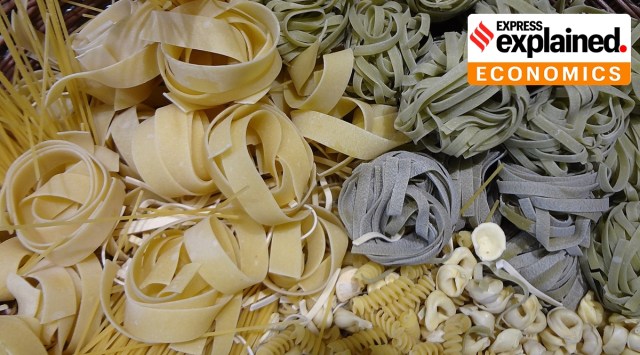Why pasta prices are soaring in Italy
On Thursday (May 11), the Italian government convened an emergency meeting in Rome with pasta producers and consumer rights groups to address the 17.5 per cent rise in prices when compared to last year.
 Pasta is a daily staple for Italians and a food with immense cultural significance. (Wikimedia Commons)
Pasta is a daily staple for Italians and a food with immense cultural significance. (Wikimedia Commons) Pasta, the quintessentially Italian staple, is as expensive as ever in the Mediterranean country.
Prices have gone up 17.5 per cent (March) and 16.5 per cent (April) when compared to the same time last year. This climb is more than double Italy’s broader measure of consumer price inflation – which stands at 8.1 per cent, according to EU statistics.
On Thursday (May 11), Industry minister Adolfo Urso chaired a commission of lawmakers, pasta producers and consumer rights groups in Rome to discuss what could be done to address the situation, Financial Times reported.
However, despite growing pressure, authorities refrained from capping prices, and assured consumers that the inflation would naturally ease in the coming months. “In a few weeks, prices will be lowered, as production costs have considerably reduced,” a spokesperson for Urso told the media.
Italy’s daily staple
Rising pasta prices are a problem of national importance. “Life is a combination of magic and pasta,” legendary Italian filmmaker, Federico Fellini, once said.
The average Italian consumes about 23 kilograms of pasta each year, Furio Truzzi, president of Assoutenti, a consumer rights group, said in a statement last month. This works out to just over 60 grams a day – or equivalent to roughly a single portion size. This means that on an average, Italians consume one pasta meal a day.
Furthermore, as Fellini’s quote captures, pasta is also a dish with deep cultural significance to Italians. There are hundreds of varieties of pasta and the type of pasta is actually an important marker of identity in Italy – each city or region has its own speciality.
Thus, while inflation is never welcomed by consumers, soaring pasta prices have been particularly painful.
Rise in cost of inputs
Pasta companies have attributed rising pasta prices to a rise in cost of inputs – primarily energy prices.
Loredana Maria Federico, chief Italian economist at UniCredit, told Reuters, “Italy‘s inflation dynamic continues to be affected by an ongoing adjustment in energy prices, its most volatile component.”
While there have been many drivers behind this, most experts cite Russia’ invasion of Ukraine as the biggest factor. According to the International Monetary Fund (IMF), supplies of Russian gas were cut by more than 80 percent in 2022, following the invasion as the EU rushed to impose strict sanctions on Russia.
Industry Minister Urso’s spokesperson also attributed the high pasta prices “to the disposal of inventories (of pasta) made when the cost of raw materials was higher.”
Rising energy prices have a multifold impact on pasta – from increasing costs of production, raising transportation and logistics costs.
“Little justification” for extraordinary prices
However, consumer groups and Italian farmers have disagreed with this assessment.
Furio Truzzi noted that while Russia’s invasion of Ukraine last February had unleashed a “tsunami” of high prices last year for some of the raw materials needed to make pasta, “today the situation appears different”, CNN reported.
Coldiretti, Italy’s biggest farmers association, said that these higher retail prices had not translated into higher revenues for farmers of durum wheat, as they continued to struggle to meet their own costs.
In fact, since May 2022, the price of durum wheat has fallen by over 30 per cent. Since making pasta basically only requires mixing durum wheat with water, Coldiretti said there was “little justification” for the extraordinary retail prices.
Furthermore, given the great disparity in pasta prices across Italy despite fairly uniform prices for wheat, something more is seemingly afoot.
Artificial inflation
Consumer rights group Assoutenti has suggested that prices may have been inflated artificially to boost profits, with the fallout from the war in Ukraine used as a cover. Another consumer rights group, Codacons, announced it filed a complaint with the competition authority “to ascertain possible illegalities on the trend of pasta’s retail prices”, as per Financial Times.
However, the recent crisis meeting has left consumer groups unsatisfied in this regard. The ministry held firm and said the market would soon correct itself in the next few months.
“The latest price surveys are already showing the first, albeit weak, signs of price decrease, a sign that the cost of pasta may fall significantly in the coming months,” said a government statement published after the meeting, Financial Times reported.
In response, the national consumer union described the meeting as a “flop”. Truzzi has even called for a boycott.
Urso’s spokesperson, however, said that the ministry is doing everything possible to avoid speculation.






- 01
- 02
- 03
- 04
- 05
































